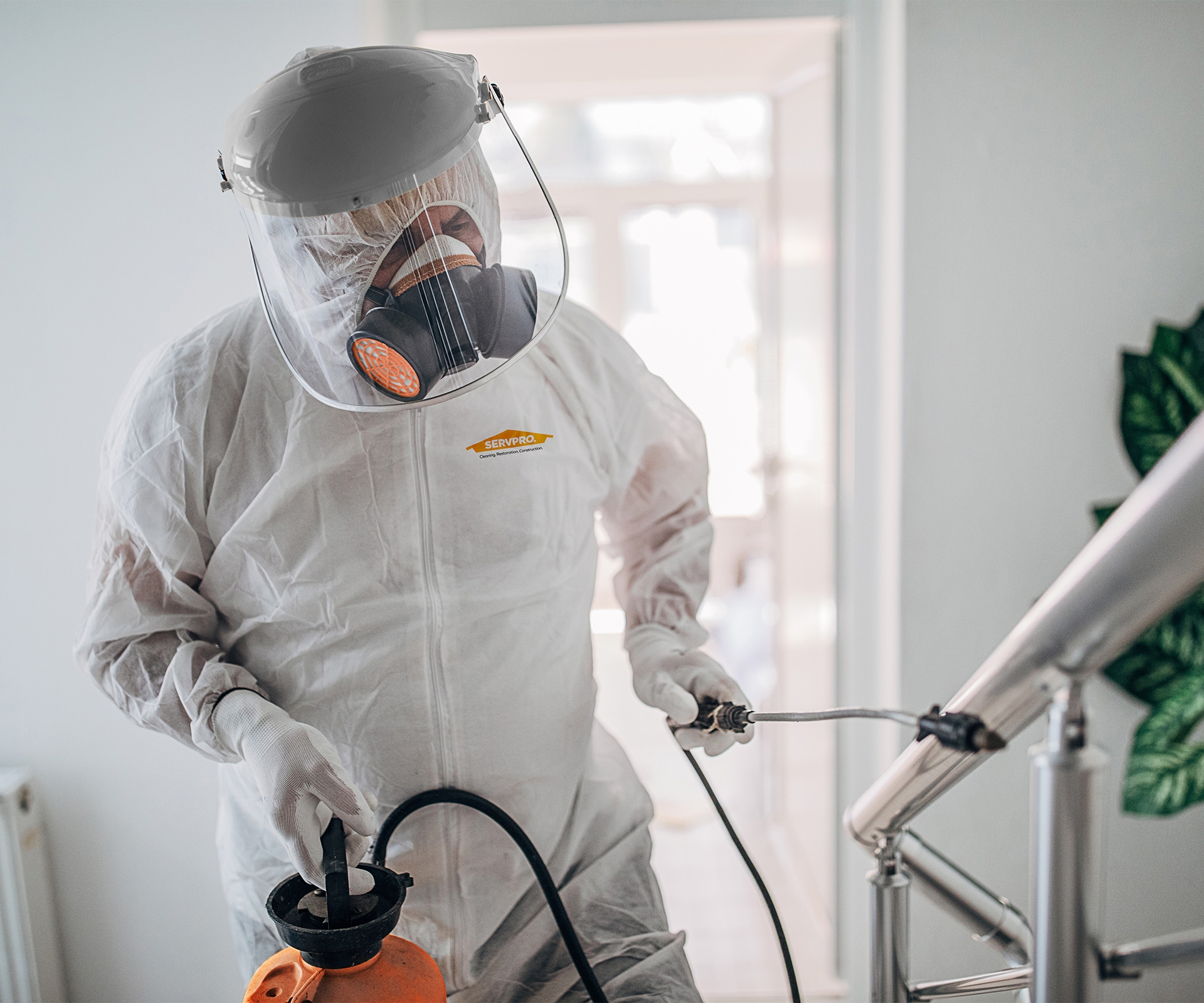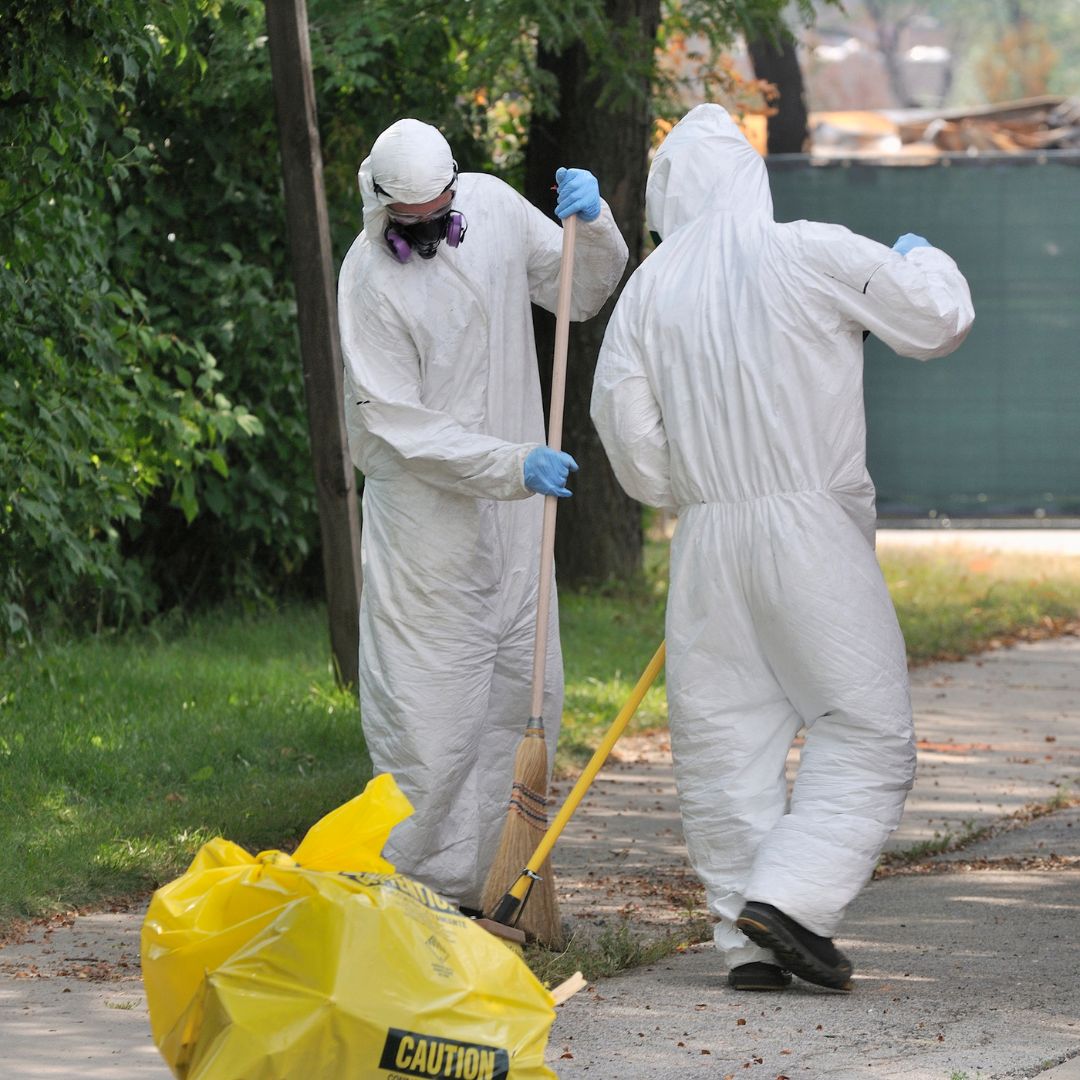Flood Damage Restoration: Quick and Effective Recuperation for Your Home
Wiki Article
Expert Biohazard Cleansing and Purification for Blood, Bodily Fluids, and Hazardous Products
The prospective health and wellness threats linked with exposure to biohazards emphasize the important demand for meticulous handling and detailed clean-up. As we navigate the elaborate landscape of biohazard cleaning, comprehending the subtleties of laws, compliance, and the customized devices at play becomes essential in making sure a safe and thorough purification procedure.
Health Dangers of Biohazard Exposure
Direct exposure to biohazards postures significant health threats that can cause extreme effects for areas and individuals alike. Biohazards encompass a variety of organic substances, including blood, physical liquids, mold and mildew, bacteria, viruses, and various other potentially contagious materials. When people enter call with these biohazards, whether via accidents, incorrect handling, or ecological exposure, they deal with the risk of contracting major ailments or conditions.Among the main health threats related to biohazard exposure is the transmission of transmittable diseases. Bloodborne pathogens such as HIV, liver disease B and C, and various germs can be existing in biohazardous materials, posing a direct danger to human health. Inhaling air-borne biohazards like mold spores or entering into call with polluted surfaces can additionally result in respiratory problems, allergic reactions, and other negative health impacts.
Furthermore, biohazard direct exposure can have long-term health implications, with some diseases showing up years after the first get in touch with (Blood Cleanup). As a result, it is important to prioritize proper biohazard cleaning and decontamination to minimize these health risks and make certain the security of individuals and areas

Specialized Training for Biohazard Clean-up
When it concerns dealing with biohazard cleaning successfully and securely, specialized training plays an essential role in making certain appropriate purification procedures are complied with. Biohazard cleanup calls for specific expertise and skills to successfully reduce dangers related to bloodborne pathogens, bodily liquids, and hazardous materials. Experts learnt biohazard clean-up go through strenuous instruction on how to securely handle, get rid of, and throw away biohazardous products to avoid contamination and direct exposure.Specialized training for biohazard cleaning covers a range of crucial subjects, consisting of proper personal safety devices (PPE) usage, bloodborne microorganism recognition, purification techniques, and dangerous waste disposal procedures. Individuals learnt biohazard clean-up are furnished with the essential expertise to assess contamination levels, identify possible dangers, and carry out proper cleaning treatments in compliance with regulative standards.
Constant training and education are vital in the field of biohazard cleanup to remain updated on the current purification modern technologies, safety procedures, and laws. By investing in specialized training, biohazard cleaning professionals can efficiently respond to emergency situation cleaning circumstances and guard both public wellness and the setting.
Importance of Proper Decontamination Strategies
Using correct decontamination techniques is important in biohazard cleaning to efficiently minimize and eliminate dangerous materials health dangers. Efficient purification not just makes sure the removal of noticeable traces of blood, bodily fluids, and various other biohazards however also targets unnoticeable virus that may present serious wellness hazards if not properly eliminated. By following rigorous purification protocols, trained specialists can considerably lower the danger of exposure to dangerous bacteria, viruses, and bacteria that could result in infections or diseases.Appropriate purification strategies involve making use of specific equipment and disinfectants that biohazard cleanup supplies are especially developed to neutralize biohazards successfully. Detailed cleansing and sanitation of polluted locations are vital to stop the spread of pathogens and make sure a secure atmosphere for occupants. Furthermore, the right disposal of biohazardous waste following decontamination procedures is vital in preventing contamination of various other surfaces or people.

Equipment and Tools for Safe Clean-up
When dealing with blood, physical fluids, or hazardous materials, biohazard cleaning professionals rely on specialized gear to minimize direct exposure risks and completely sanitize the damaged area. In addition, biohazard cleaning kits consisting of disinfectants, absorptive products, and biohazard bags are utilized to safely contain and get rid of of polluted products.Advanced cleansing tools like hospital-grade anti-bacterials, HEPA-filtered vacuums, and fogging equipments are used to sanitize surfaces and remove biohazards successfully. Specialized devices such as sharps containers and biohazard waste disposal containers are used to safely manage sharp things and biohazardous waste products. By making use of the appropriate devices and devices, biohazard cleaning experts can guarantee a comprehensive clean-up process that prioritizes safety and security and minimizes health dangers for both employees and passengers of the afflicted room.
Rules and Conformity in Biohazard Cleansing
Appropriate adherence to guidelines and conformity standards is paramount in biohazard cleansing to ensure the safety and security of both personnel and the environment. Government firms such as OSHA (Occupational Security and Wellness Management) and the EPA (Environmental Security Company) have actually established specific guidelines for biohazard cleaning treatments to minimize wellness dangers and ecological contamination. These regulations cover a range of aspects including the handling, transport, and disposal of biohazardous products, in addition to the needed training and safety equipment required for personnel associated with the cleaning process.Biohazard cleansing companies should remain up-to-date with these regulations to guarantee that their operations fulfill the called for safety requirements. Failing to comply with these policies can result in severe effects, including fines, lawful action, and endangering the health of people and the environment. By complying with rigorous check my blog regulations and compliance steps, biohazard cleaning companies can successfully minimize risks and make certain a detailed and secure cleaning procedure for all parties included.
Conclusion
In conclusion, biohazard cleaning and decontamination require customized training, proper techniques, and adherence to laws. Exposure to blood, physical liquids, and unsafe materials positions considerable wellness dangers, making it essential to utilize the right equipment and devices for safe cleaning. By adhering to stringent procedures and standards, professionals can efficiently mitigate the risks connected with biohazard direct exposure and guarantee the safety and security of both themselves and others.
As we navigate the detailed landscape of biohazard cleanup, understanding the subtleties of regulations, conformity, and the specialized tools at biohazard cleanup estimate play becomes necessary in guaranteeing a secure and complete purification process. (Blood Cleanup)
When it comes to managing biohazard cleaning efficiently and securely, specialized training plays a fundamental duty in making certain proper decontamination treatments are complied with.Utilizing appropriate purification techniques is crucial in biohazard clean-up to effectively get rid of hazardous products and decrease wellness threats. Additionally, biohazard cleaning packages consisting of anti-bacterials, absorbing products, and biohazard bags are utilized to safely get rid of and have of polluted items.
Federal government firms such as OSHA (Occupational Security and Health And Wellness Management) and the EPA (Environmental Defense Company) have actually established particular guidelines for biohazard clean-up procedures to minimize wellness risks and ecological contamination.
Report this wiki page